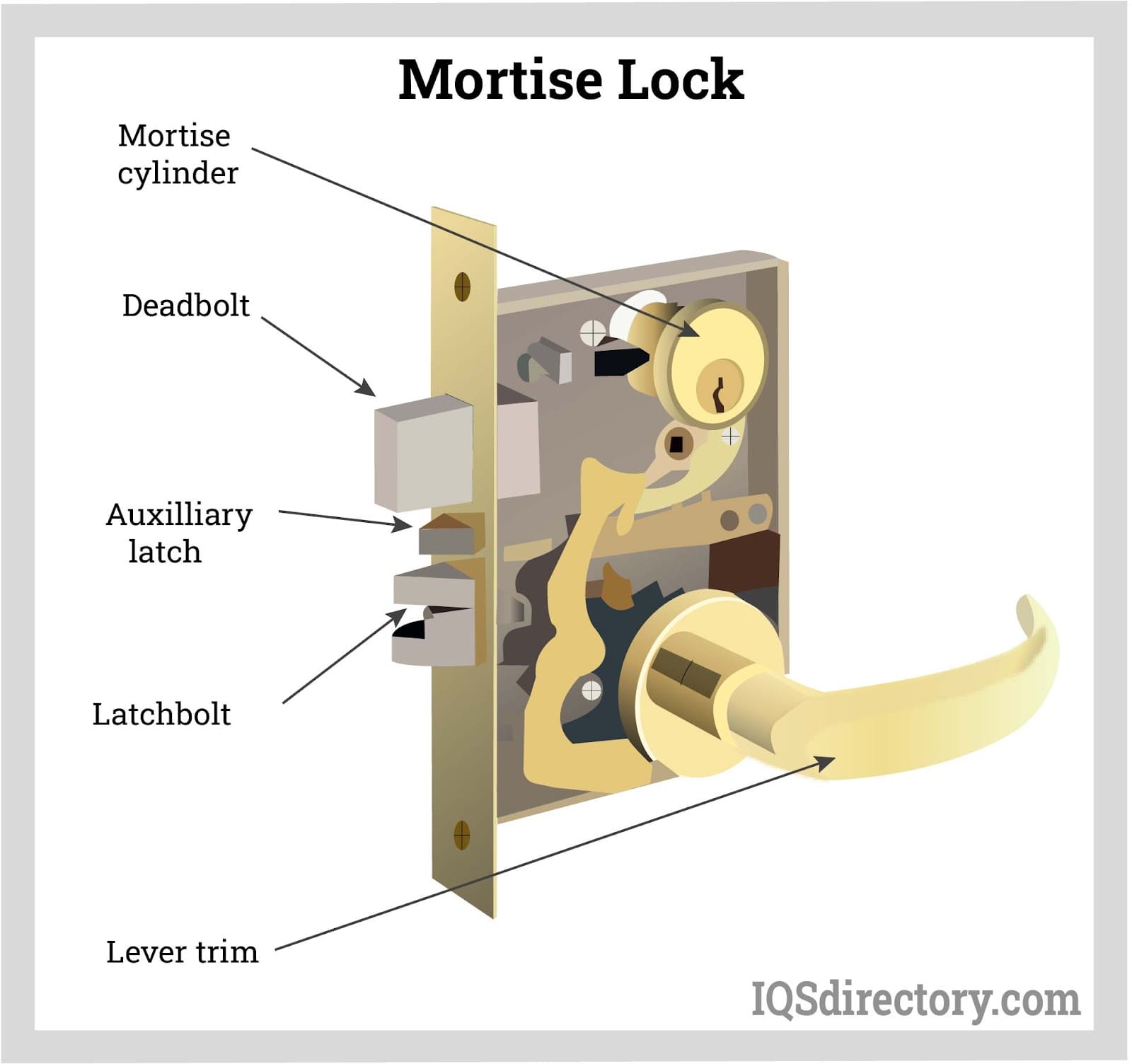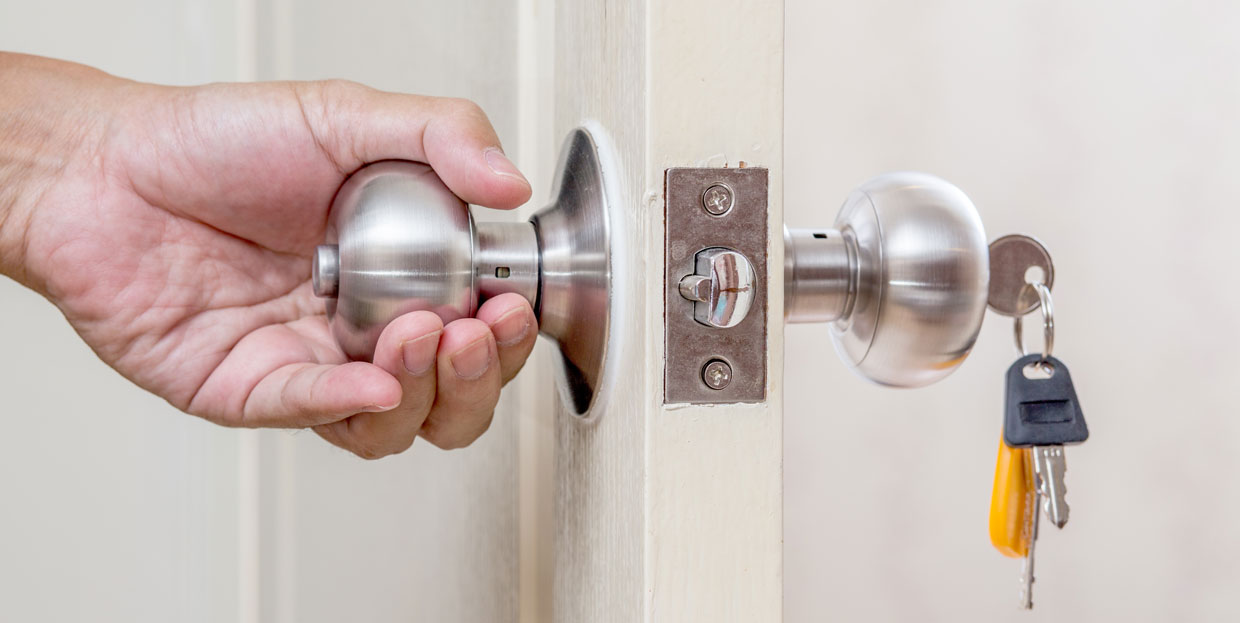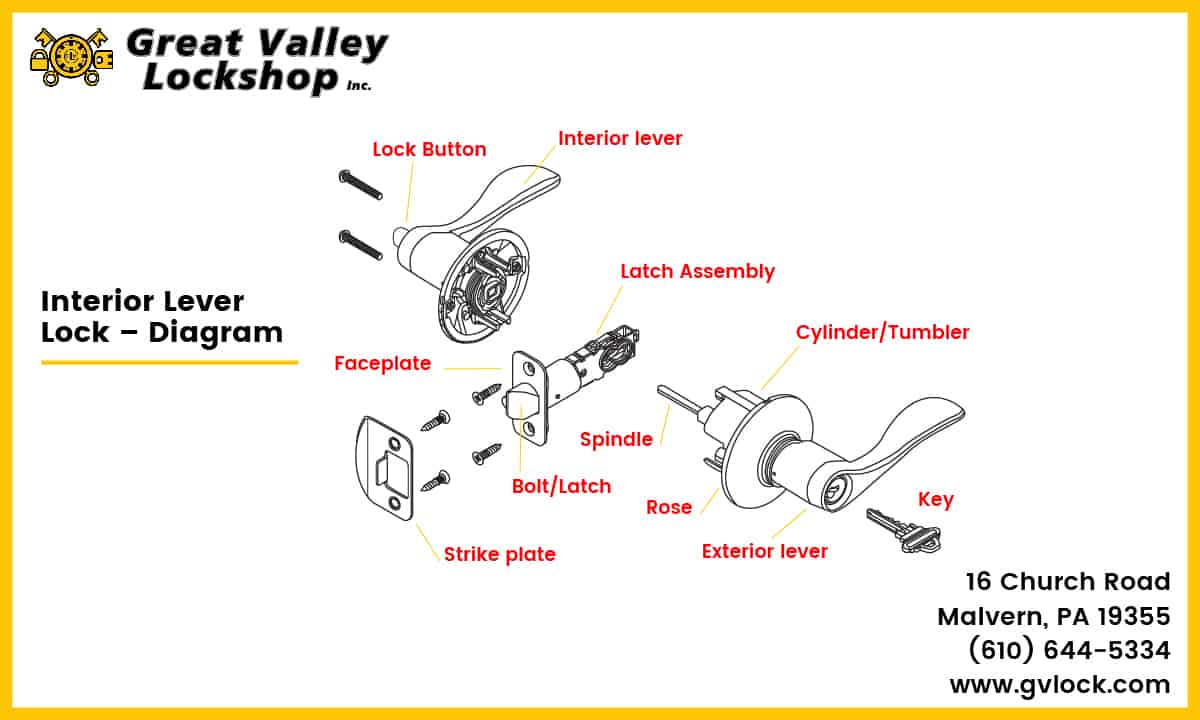Types of Bedroom Door Locks: Inside Of A Bedroom Door Lock

Bedroom door locks are an essential security feature in any home, providing privacy and protection from unwanted entry. Understanding the different types of locks available can help you choose the best option for your needs.
Deadbolt Locks
Deadbolt locks are considered the most secure type of door lock, offering a high level of resistance against forced entry.
- Mechanism: Deadbolt locks operate with a bolt that extends into the doorjamb when locked, creating a strong barrier against intrusion. They are typically operated by a key on the exterior and a turn knob or lever on the interior.
- Types: Deadbolt locks come in single-cylinder and double-cylinder variations. Single-cylinder deadbolts can be unlocked from the inside with a turn knob or lever, while double-cylinder deadbolts require a key to unlock from both sides.
- Advantages: Deadbolt locks offer superior security due to the strength of the bolt and the difficulty of forcing the lock open.
- Disadvantages: Double-cylinder deadbolts can pose a safety hazard in case of a fire, as they require a key to unlock from the inside.
Lever Handles
Lever handles are popular for their ease of use and stylish designs.
- Mechanism: Lever handles operate with a lever that is pushed down to engage the locking mechanism. They often include a latch that retracts when the lever is pushed down, allowing the door to open.
- Types: Lever handles can be found with various locking mechanisms, including deadbolt locks, latch locks, and combination locks.
- Advantages: Lever handles are easy to operate, making them a good choice for individuals with limited mobility. They are also available in a wide range of styles to complement any décor.
- Disadvantages: Lever handles are generally less secure than deadbolt locks, as they can be more easily forced open.
Knob Locks
Knob locks are a common and traditional type of door lock.
- Mechanism: Knob locks operate with a knob that is turned to engage the locking mechanism. They often include a latch that retracts when the knob is turned, allowing the door to open.
- Types: Knob locks can be found with various locking mechanisms, including deadbolt locks, latch locks, and combination locks.
- Advantages: Knob locks are affordable and readily available.
- Disadvantages: Knob locks can be less secure than deadbolt locks, as they can be more easily forced open.
Smart Locks
Smart locks offer enhanced security and convenience with features like keyless entry, remote access, and integration with smart home systems.
- Mechanism: Smart locks use various technologies, such as Bluetooth, Wi-Fi, or fingerprint scanning, to unlock the door.
- Types: Smart locks come in various styles, including deadbolt locks, lever handles, and knob locks.
- Advantages: Smart locks offer convenience and enhanced security, allowing you to control access to your home remotely.
- Disadvantages: Smart locks can be more expensive than traditional locks and may require a reliable internet connection to function.
Security Features of Bedroom Door Locks

A bedroom door lock is a crucial element in ensuring the privacy and security of your personal space. It’s not just about keeping intruders out, but also about providing a sense of peace of mind. This is where the security features of a lock come into play, offering an extra layer of protection against unauthorized access.
Anti-Bumping Mechanisms
Anti-bumping mechanisms are designed to prevent the lock from being opened using a bumping technique. Bumping involves using a specially modified key, known as a bump key, to strike the lock’s pins and force them into alignment, allowing the lock to be opened. Anti-bumping mechanisms are implemented by incorporating features that resist the impact of a bump key, such as:
- Mushroom-shaped pins: These pins have a wider head, making it harder for a bump key to displace them.
- Serrated pins: These pins have grooves or serrations that prevent a bump key from sliding smoothly over them.
- Anti-bumping plates: These plates are positioned behind the pins, blocking the bump key from striking them directly.
These mechanisms significantly reduce the effectiveness of bumping techniques, making it much more difficult for unauthorized individuals to gain access.
Anti-Picking Mechanisms
Anti-picking mechanisms are designed to prevent the lock from being opened using lock picking tools. Lock picking involves manipulating the lock’s pins with specialized tools to align them in a specific order, allowing the lock to be opened. Anti-picking mechanisms are implemented by incorporating features that make it difficult for a lock picker to manipulate the pins, such as:
- Sidewinder pins: These pins have a sideward offset, making it difficult for a pick to engage them properly.
- Anti-pick shields: These shields are positioned behind the pins, preventing a pick from reaching them.
- Security pins: These pins have a special design that makes them more resistant to picking, such as having a complex shape or a spring-loaded mechanism.
These mechanisms make it significantly harder for a lock picker to manipulate the pins, thus enhancing the lock’s resistance to picking.
Anti-Drilling Mechanisms
Anti-drilling mechanisms are designed to prevent the lock from being opened by drilling through the lock cylinder. Drilling involves using a drill to create a hole in the lock cylinder, allowing access to the pins and enabling the lock to be opened. Anti-drilling mechanisms are implemented by incorporating features that make it difficult to drill through the lock cylinder, such as:
- Hardened steel: The lock cylinder is made of hardened steel, making it more resistant to drilling.
- Anti-drill plates: These plates are positioned within the lock cylinder, preventing the drill bit from reaching the pins.
- Drill-resistant pins: These pins have a special design that makes them more resistant to drilling, such as having a hardened core or a spring-loaded mechanism.
These mechanisms make it much more challenging for someone to drill through the lock cylinder, effectively preventing unauthorized access.
Security Levels of Different Lock Types, Inside of a bedroom door lock
The security levels of different types of locks vary depending on the features they incorporate. Some locks offer basic security, while others are designed for high-security applications.
- Basic Deadbolt Locks: These locks offer a basic level of security and are typically found on standard bedroom doors. They may include some anti-bumping and anti-picking features, but they are generally more vulnerable to drilling.
- High-Security Deadbolt Locks: These locks are designed for increased security and incorporate advanced features such as multiple locking mechanisms, anti-bumping, anti-picking, and anti-drilling features. They are often used in high-security applications where a higher level of protection is required.
- Smart Locks: These locks utilize electronic technology to provide enhanced security features, such as keyless entry, remote access, and automatic locking. They often incorporate multiple security layers, including encryption and biometric authentication, making them highly secure.
It’s important to choose a lock that provides an appropriate level of security for your needs and budget.
Installation and Maintenance of Bedroom Door Locks

Installing and maintaining a bedroom door lock is crucial for ensuring your safety and privacy. A properly installed and maintained lock can provide peace of mind, knowing your belongings and personal space are secure.
Installing a Bedroom Door Lock
Installing a bedroom door lock is a relatively straightforward process, but it requires some basic tools and knowledge. The process involves replacing the existing door knob or handle with a new lockset.
- Gather the necessary tools. This includes a screwdriver, a drill, a pencil, a measuring tape, and a level. You may also need a hammer and chisel if you need to remove old hardware.
- Remove the old door knob or handle. Use a screwdriver to remove the screws holding the knob or handle in place. Once the screws are removed, the knob or handle should come off easily.
- Install the new lockset. Align the new lockset with the existing holes in the door and use the screws provided to secure it.
- Attach the latch. The latch is the part of the lock that extends into the strike plate. Align the latch with the strike plate and secure it with the provided screws.
- Install the strike plate. The strike plate is the metal plate that is attached to the door frame. Align the strike plate with the latch and secure it with screws.
- Test the lock. Once the lock is installed, test it to ensure it is working properly. Try locking and unlocking the door several times.
Maintaining a Bedroom Door Lock
Proper maintenance can significantly extend the life of your bedroom door lock. Here are some tips for keeping your lock in optimal condition:
- Regularly clean and lubricate the lock. Use a soft cloth to wipe away dust and debris. Apply a small amount of lubricant, such as graphite powder or silicone spray, to the lock’s moving parts.
- Avoid using harsh chemicals. Harsh chemicals can damage the lock’s finish and internal mechanisms.
- Tighten loose screws. Over time, the screws holding the lock in place can loosen. Check the screws regularly and tighten them as needed.
- Replace worn-out parts. If the lock is not working properly, it may be necessary to replace worn-out parts. This could include the latch, the strike plate, or the lock cylinder.
Troubleshooting Common Problems with Bedroom Door Locks
If your bedroom door lock is not working properly, there are several common problems that you can troubleshoot yourself.
- The door won’t latch. This could be due to a misaligned latch or strike plate, a worn-out latch, or a broken spring.
- The key won’t turn. This could be due to a clogged lock cylinder, a broken key, or a worn-out lock cylinder.
- The lock is sticking. This could be due to dirt and debris in the lock cylinder or a lack of lubrication.
Inside of a bedroom door lock – You know, sometimes I think about the things that go on behind a bedroom door lock. Maybe it’s a wild party, maybe it’s a romantic getaway, maybe it’s just someone trying to avoid their family. But whatever it is, I’m pretty sure those rose gold curtains you’ve been eyeing on this website would make the experience even more glamorous.
And hey, maybe that’s why the lock is so important, to keep the secrets of those rose gold curtains safe.
You know, sometimes I think about the mysteries hidden inside a bedroom door lock. What secrets does it hold? What dreams and anxieties are whispered behind its metal barrier? Maybe it’s a portal to a world of purple walls and fluffy pillows, like the ones you’d find in purple bedrooms for teenage girls.
But then again, maybe it’s just a lock, and the real magic is in the stories we tell ourselves about what lies beyond.
